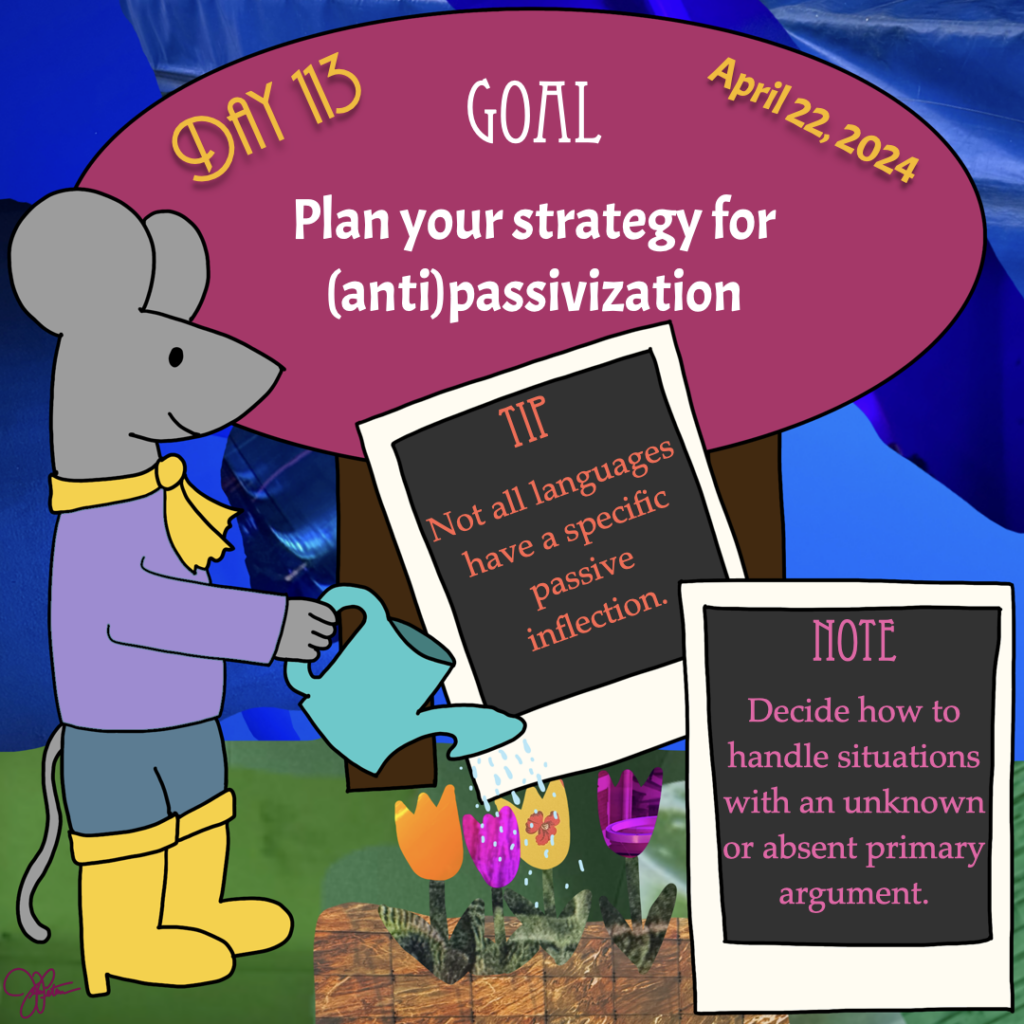
Goal: Plan your strategy for (anti)passivization
Note: Decide how to handle situations with an unknown or absent primary argument.
Tip: Not all languages have a specific passive inflection.
Work focus: Organize/Plan/Structure
Now that you have explored options for how the (anti)passive can be formed, today’s focus is on planning out your strategy. You don’t need to create forms just yet—the goal is to make sure you know what elements you want to incorporate so you can prepare for any forms you might need to create (which will be part of tomorrow’s task). You may not need any new forms, and you may, in fact, decide you don’t want a passive/antipassive form in your language at all. And that’s absolutely fine. The question then becomes how you want to handle situations in your language where the agent of the verb is unknown or otherwise not mentioned (or, in the case of antipassive forms, where the absolutive argument is unknown/absent).
For instance, you may decide that rather than saying a passive structure like The table was broken, your language might instead use a vague or indefinite pronoun to “blank out” the subject, as in Someone/Something broke the table. That effectively does the same thing as a passive form. Think through your options and decide which strategy (or strategies) will work best for your language.
